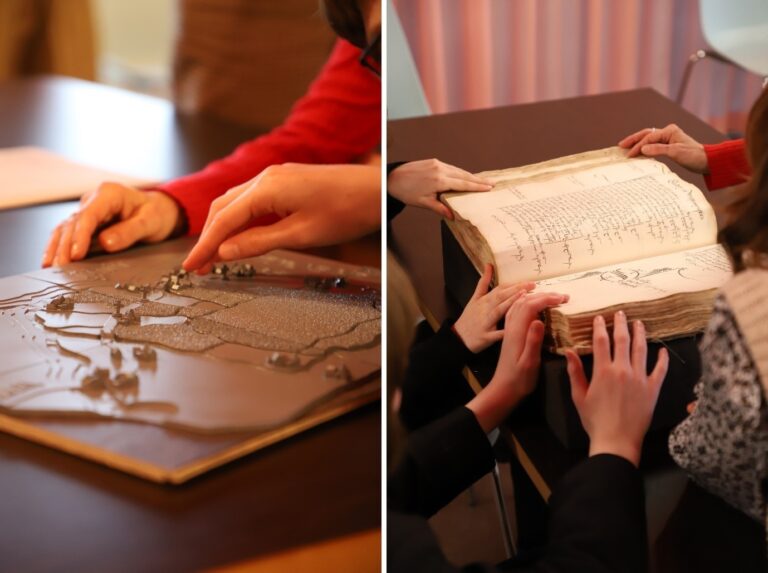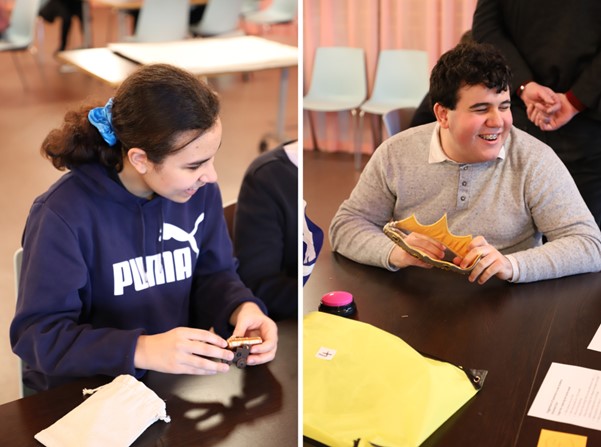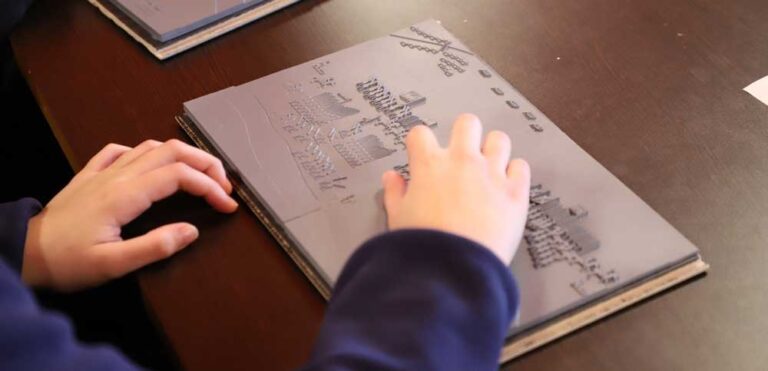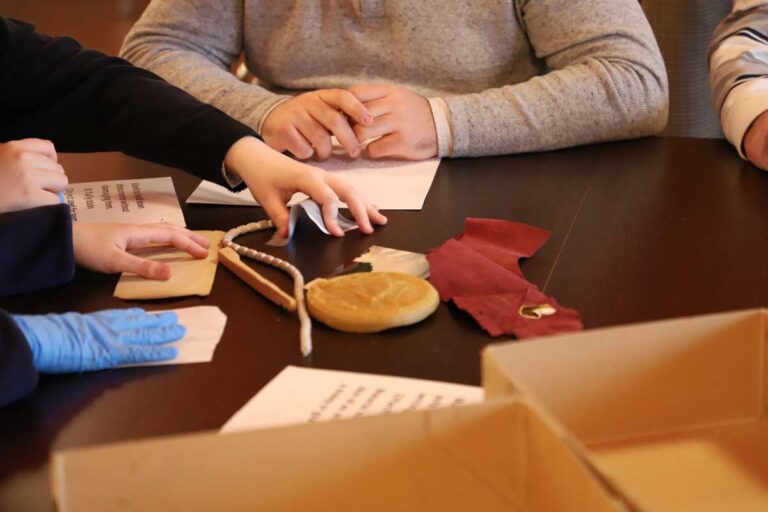How can you explore archival records without relying on sight?
This is what the Education & Outreach department at The National Archives explored in a new workshop designed specifically for blind and partially sighted students. The workshop, and research leading up to it, sought to answer the question: how can we make archives not only accessible, but also fun and engaging for visually impaired students?

Delivering an exploratory workshop – Ellen Oredsson
On 18 March, we welcomed a group of students from New College Worcester, a school for young people who are who are blind or vision impaired. Working closely with Jeanette Normanton-Erry, the Head of History at the school, we had prepared a pilot workshop specially designed for them and what they were studying.
The students started the day with a repository tour, exploring the large behind-the-scenes storage areas where we keep our collections. The tour and workshop made use of archival exploration relying on senses other than sight: touch, sound, and even smell. In the repositories, the groups were encouraged to listen out for unusual sounds, like the wheels of the document trollies or the beeping of the box lift.

The workshop began with students being introduced to the story of The National Archives, featuring Henry Cole’s rat, by opening a small treasure chest containing a fluffy rat toy. Students were divided into groups each focusing on one document, becoming ‘experts’ in records ranging from a Medieval map to an illustration of the Peterloo Massacre. These documents were selected through teacher consultation, designed to enhance their history curriculum.
In addition, we consulted with Kate Elizabeth Antolak, a teacher who is also a blind Braille user. She provided us with invaluable insights that informed our approach. We designed the session for students to access the historical documents in stages, using various methods including sensory props and 3D tactile models. Our aim was for the session to be exploratory, not didactic, with students encouraged to raise questions and discuss their thoughts.
The workshop was centred around innovative 3D printed tactile versions of these documents. These were created by George Rhodes of the University of Westminster and All Able, and their design was a highly collaborative process. Tactile images are images that you can ‘touch’: raised surfaces that translate a simplified design. This allowed the visual aspects of our two-dimensional records to come to life outside of visual descriptions.

Once students had felt these tactile models, they explored hint bags containing sensory clues about the context of the document, providing a fun and engaging element to the session.
The group investigating the Tudor trumpeter John Blanke’s wage record, for example, handled a model of a trumpet, which hinted at his job. A recording of protesters demanding universal suffrage provided more context for an illustration of the Peterloo Massacre. One group had a smell pot in their bag, containing some burnt peat to demonstrate that the medieval map they were investigating depicted peatlands.
Large print and Braille worksheets were introduced after these activities, designed to promote group discussion and provide more detailed context.

We ended with an original document showcase. Each group got to explore the actual document that they had been investigating, and then all students got to touch two special documents from our Safe Room: The Tide letter written by Elizabeth I and Henry VIII’s will.
Before the workshop, we worked with our Collection Care team to establish where and how much the students would be able to safely touch the documents, allowing them to even be able to touch Elizabeth I and Henry VIII’s signatures!
Following our consultation with Kate, it became clear how profound she had found the experience of being able to touch something that these iconic figures from history had penned. This provided a tangible connection to the past.

The National Archives Education service aim to continue to pilot ‘Sensing the Archives’ sessions and are excited to expand this project to more young people.
Designing tactile images – George Rhodes
Tactile maps and diagrams have long been used as tools to support learning for blind and partially sighted individuals. The aim of my PhD research is to formalise a lower barrier to entry for producing these tactile models.
For the tactile images in this workshop, I used Optacartography, a new methodology for converting 2D maps and images into high fidelity tactile diagrams. The method begins with an initial graphic that will eventually become the 3D tactile image. That initial map is then adjusted and converted into a 3D file. The conversion works by identifying areas of the map that the creator wants extruded to different heights. The production method uses resin 3D printing to reduce printing time and costs when compared to extrusion printing.
It was a true pleasure to see all the effort of this research turn into something that is actually making a difference to real people. Seeing the students not only being able to read and interact with these historical documents but have fun doing so was very rewarding.
This workshop was the culmination of research done during Ellen Oredsson’s project as part of The National Archives’ and Research Libraries UK’s Professional Fellowship Scheme 2023-24, to investigate how we can make archives not just accessible but fun and engaging for visually impaired audiences. You can learn more about her research and experience during the fellowship in her accompanying blog post.
Learn more about George Rhodes’ work and research on his website Make Things Accessible.